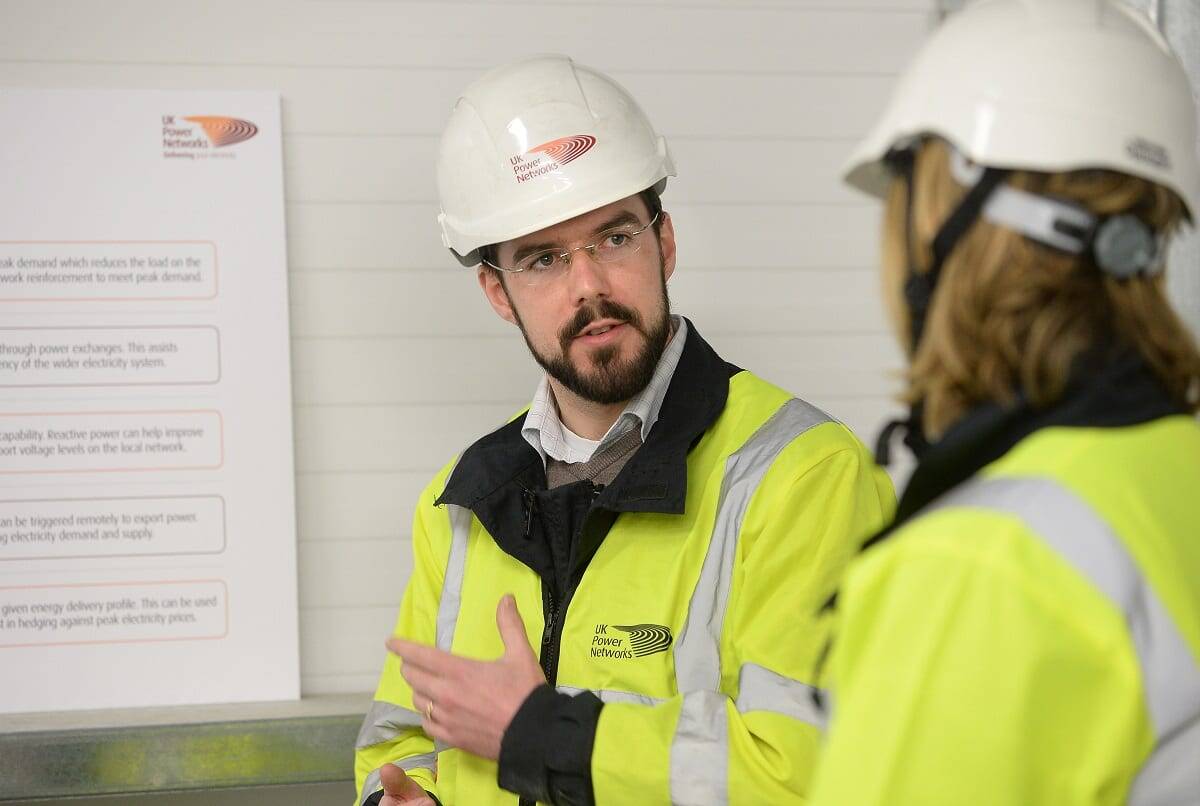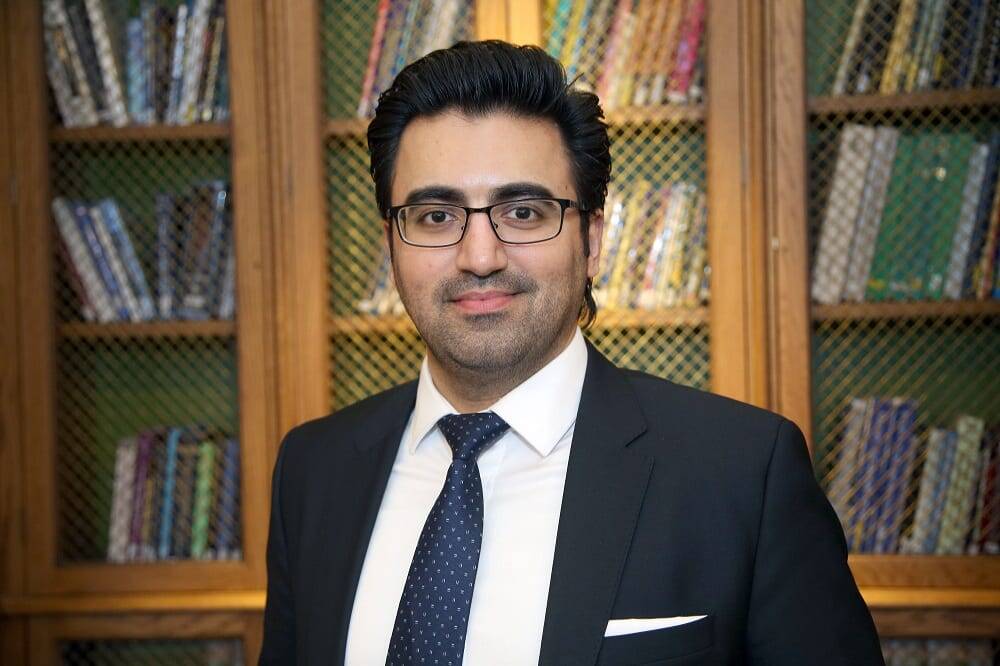You’ve reached your limit!
To continue enjoying Utility Week Innovate, brought to you in association with Utility Week Live or gain unlimited Utility Week site access choose the option that applies to you below:
Register to access Utility Week Innovate
- Get the latest insight on frontline business challenges
- Receive specialist sector newsletters to keep you informed
- Access our Utility Week Innovate content for free
- Join us in bringing collaborative innovation to life at Utility Week Live
UK Power Networks (UKPN) was formed in 2010 and since then has been part of an evolution of the energy system, aimed at delivering clean energy into customers’ homes. Leading engineers at the company share their views on what has changed - and what the next ten years is likely to hold.
The DG Rush
Sotiris Georgiopoulos, head of smart grid development, has worked at UKPN since its foundation in 2010.
He said: “It has been a remarkable and exciting time to be in this industry. Just after I started, all of a sudden new technology and policy created a gold rush for renewable energy. The pace of innovation has been staggering.”
Spurred on by new feed-in tariffs in 2010, renewable energy began to boom – the so-called ‘distributed generation’ (DG) rush. Not only were developers investing in large-scale wind and solar farms, members of the public too were installing rooftop and solar panels.

“All this new generation pushed network capacity close to its limits in some areas,” Sotiris explained. “In simple terms we used technology and software to manage the network more efficiently. It meant new DG could continue to connect to the network at the lowest possible cost.”
Over the next ten years, Sotiris led the company’s award-winning Flexible Plug and Play project before implementing new Flexible Connections across UKPN’s areas. In total, flexible connections have saved customers more than £95 million since 2015 and has enabled 153MW of new connections – mainly renewables – which is equivalent to about 38,000 household solar panel systems. Now, Sotiris oversees a portfolio of Smart Grid programmes worth tens of millions to ensure electricity networks across London, the East and South East are future proof.
“The biggest challenge of all wasn’t actually technical, it was the human element,” he explained. “We needed to grow our existing skills, find new ones and re-imagine our roles. Then, we had to overhaul systems, processes and culture to accelerate the change within the company. Out of that we formed the Smart Grid Development team in 2016, which now has around 30 people with an enormous diversity of skills and ways of thinking we never imagined.”
As a company, UKPN has now connected enough renewable energy to power 3.5 million homes, with more than 170,000 generators individual providers sending energy to the network. In context, the 7.2GW of renewables connected to UK Power Networks is more than double the capacity of the planned £20 billion Hinkley Point C Nuclear Power Station.
Big Batteries
One of the only drawbacks of renewable energy is that it’s not on-demand. In fact, solar supply is at its highest in the middle of the day when the sun is shining, when energy demand is low.

“Smarter Network Storage was designed to fix exactly that problem,” said Ian Cooper, Innovation Lead, who has also worked at UKPN from the beginning. Ian is, among other things, the ‘big battery guy’ at the company. From 2013-16 he worked on a project to connect more than 50,000 lithium-ion batteries together in a custom-built storage facility at Leighton Buzzard, enough to power 1,100 homes for a whole day or charge an average smart phone more than 1.2 million times. At the time, it was dubbed the UK’s biggest battery. With the battery available, network operators can use the standby power – mostly clean energy – to power homes when there is limited available capacity. It means the company doesn’t have to spend customer’s money on expensive infrastructure upgrades to create more headroom.
“It was a monumental technical, commercial, and logistical challenge,” Ian said. “At the time it had never been done before in the UK. Across the team we worked more than 46,000 hours, but it was an incredible thing to be part of.”
Ian, who now manages a pipeline of new ideas and projects for the innovation team, has seen energy storage across the network rise dramatically during his time at the company. UKPN now has 257MW in total storage connected to the network. That’s almost 43 times the size of the original big battery. A further 1,770MW – equivalent to nearly 300 big batteries – has been accepted for connection in the future.
“The project really raised the profile of storage in the UK,” Ian said. “All of a sudden, we went from zero connection enquiries to hundreds. When we built Smarter Networks Storage, the biggest battery that was operational, was just 1MW. We now have several thousand times that amount on the network. It’s grown so much more than we ever imagined.”
UKPN has moved 40 innovative ‘solutions’ into business as usual from 2015-2020, and across the industry the company has received the most National Innovation Competition funding, and saved customers the most money through smart projects.
People Power

Dr Giulia Privitera is an engineer with a passion for people, specifically customers who could be face challenges in the fast-paced, technology driven transition to achieve net zero. Giulia joined UKPN in 2014 to follow her passion after spending five years as a researcher in nanotechnology at the University of Cambridge. Since then she’s overseen several projects to make the energy transformation real for consumers and is now responsible for the company’s Social Sustainability Strategy and Programme.
Giulia first worked on Energywise, which ran from 2014-2018. The award-winning innovation project explored how UKPN could work collaboratively with energy suppliers and local trusted organisations to deliver energy saving opportunities and financial incentives to communities who may have been struggling with energy bills. What we learnt through the trials was key to inform our embedded partnership strategy on how to deliver more inclusive services and support our customers who need us the most.
“Energywise followed on from the success of the Low Carbon London project, which was one of our first Innovation flagship projects,” Giulia explained. “That project investigated every element of how a future, smarter grid would operate, including unlocking the benefits of smart tariffs, testing new commercial arrangements for renewables and paving the way for electric heating and transport. These two projects have set up the basis for our ongoing customer-centric programme looking at solutions that enable more people to participate in the transition to a smart flexible energy system.”
In 2017, Giulia worked as low carbon technologies delivery manager, overseeing a portfolio of projects that aim to facilitate net zero, with a particular focus on electric vehicles. “The goal is to facilitate the transition to electric vehicles so that our customers can charge where they want at an affordable cost, whether this is at home, on the street, en-route or at work,” Giulia said. “To do that, we’re forecasting and monitoring the uptake, trialling new smart solutions and investing strategically to make sure it’s as easy as possible to switch.” UKPN forecasts up to 3.6m Electric Vehicles on its networks by 2030, an exponential rise from 100,000 today.
Now she is working to deliver the company’s Social Sustainability Strategy and Programme, which focuses on maximising partnerships, tackling fuel poverty, managing its Priority Services Register to help people in a power cut, and providing inclusive services.
“We have more than 500 partnerships with organisations from across the board, including charities, local authorities, voluntary services and health care,” Giulia explained. “Our strategy is about inclusivity, collaboration, and innovation. That is, to be the most socially responsible network operator in how we deliver services that support our diverse communities and all of our customers in vulnerable circumstances.”
Power cuts are now rare, as investment and innovation in the electricity networks since 2010 means that on average, a customer now experiences a power interruption once every three years, compared to once every 18 months in 2010/11. The company has also reduced the duration of power cuts by 56 per cent so a customer is without power for less than half an hour on average, compared to 64 minutes in 2010.
The company has also transformed customer service with an average customer rating of 9.2 out of ten, and five stars on Trustpilot. It provides free extra help and support during power cuts to with 1.8 million households in vulnerable circumstances on its Priority Services Register.
Heating up
Renewables and electric vehicles will continue to transform the energy system and pave the way for net zero. The next big challenge on the horizon is heating.

“Heating accounts for around a third of total CO2 emissions in the UK, with most homes and businesses supplied by natural gas,” explained Zain Habib, Innovation Programme manager and lead of the company’s heat taskforce. “This year we launched our industry-first Heat Strategy, which sets out our plans to gather data, refine our forecasts, and lead the debate for change. We’ll work with people from a broad spectrum of backgrounds, organisations and professions to facilitate low carbon heating at the lowest cost and least disruption for all our customers.”
Decarbonising heating is still in its early stages and UKPN has launched new heat innovation projects, working with colleagues in the gas sector, in communities and with local authorities to inform the future approach.
Zain said: “What we do know for sure is that a one-size-fits-all approach won’t work for an intimate, localised service such as heat. We believe localised solutions, considering local dynamics and demographics under a national framework, will unlock this challenge. So we need to get out there – learn, educate and work with our local communities to make change happen. That’s exactly what we’ve been doing in the last decade and it will lead to success in the future.”




Please login or Register to leave a comment.